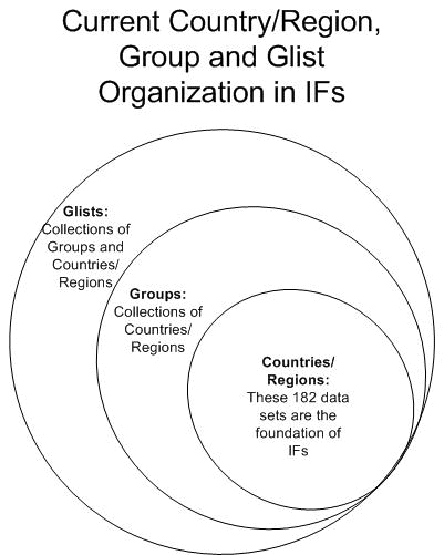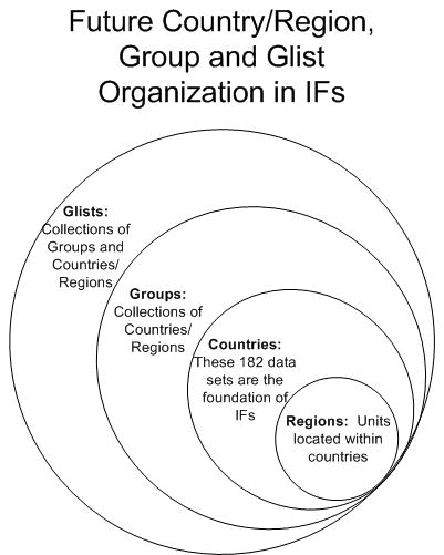
182 countries underpin the functioning of IFs and these countries can be displayed separately or as parts of larger groups that users can determine.
Below is a visual representation of how different entities are organized into Countries/Regions, Groups or Glists:

*Note: In older versions of IFs, Regions were used as intermediaries between Countries and Groups. In the future, they, or some similarly named unit, will be a sub-unit of Countries. Regions, acting as a sub-unit of Countries, are currently not a feature of IFs.
When using IFs, there are many occasions where the user is asked whether or not they would like to display their results as a product of single countries, or larger groups. This is typically a toggle switch that moves between Country/Region and Groups.
Countries/Regions are currently the smallest geographical unit that users can represent. There are 182 different countries/regions that users can display.
Groups are variably organized geographically or by memberships in international institutions/regimes. You can find out who is represented in each group by exploring the Managing Regionalization function.
Glists merge both Groups and Countries/Regions. These lists are mostly geographically bound.
